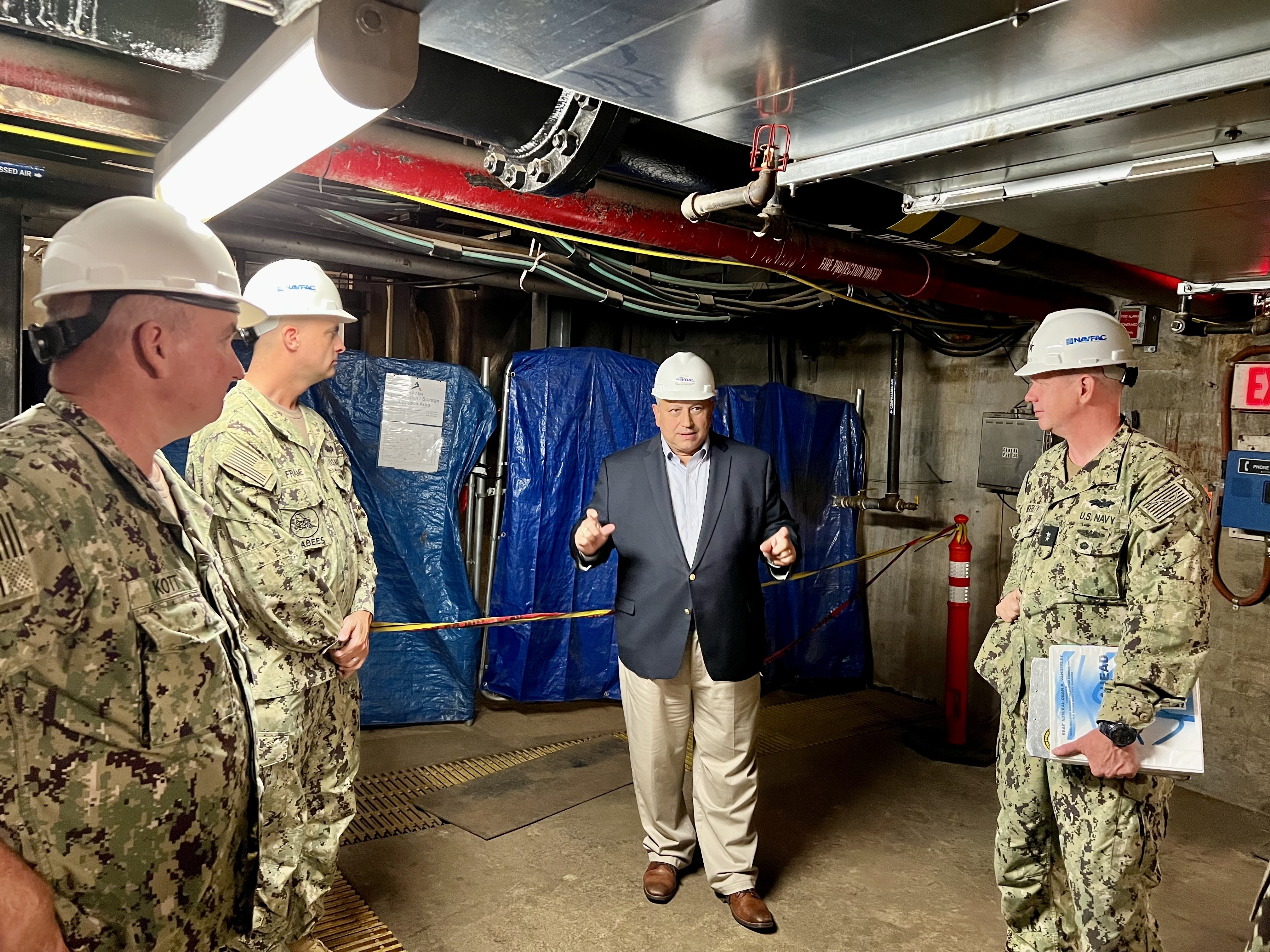
The Navy will not finish defueling Red Hill until Dec. 31, 2024, at the earliest, according to the Navy’s defueling plan for the Hawaii fuel storage facility.
The defueling plan, as well as the Navy’s investigation into leaks at Red Hill – which led to decontamination of the drinking water used by Hawaii residents and the Navy community – were released Thursday night by the Hawaii Department of Health. The documents were embargoed by the Navy until Friday morning.
“We are releasing these documents in the interest of transparency,” Deputy Director of Environmental Health Kathleen Ho said in a news release. “Red Hill needs to be shut down as quickly as possible and we fully expect that the Navy will marshal all possible available resources to defuel and decommission the facility. However, with the extensive repairs needed and the Navy’s history of spills from unsafe pipelines, our first priority continues to be ensuring that all defueling activities are performed safely for the sake of the people and environment of Hawai‘i.”
While the Navy’s defueling plan sets Dec. 31, 2024 as the earliest date that the defueling process will finish, it mentions that there are potential delays that could cause it to take longer. It will take four to eight months to defuel the storage facility, according to the Navy’s defueling plan.
Secretary of Defense Lloyd Austin, who ordered the defueling, has called for the creation of a Joint Task Force Red Hill to oversee the defueling process. A senior Navy official, who has not yet been announced, will lead the process.
The Navy will conduct the plan in five phases, with the first phase already completed and second expected to be finished by the end of August. The first phase was the review of the third-party assessment followed by identification of actions necessary for defueling. The Navy will then implement necessary actions for making Red Hill safe to defuel with executing actions for final preparedness as the fourth step.
In defueling Red Hill, the Navy will first have to repair some of the pipes it will later use. This requires the removal of 1,159,000 gallons of fuel from those lines. That fuel will be stored in a surge tank, according to the plan.
The longest phase is the third one, which is slated to start in September 2022 and finish in January 2024. This phase includes hiring contractors to complete work at Red Hill as well as the infrastructure repairs necessary to defuel the facility.
The last step is the defueling and relocation of the fuel. The Navy needs to remove fuel from 20 tanks, four surge tanks and any relative pipes.
It is not clear where the fuel is expected to go. Adm. John Aquilino, who leads U.S. Indo-Pacific Command, declined to tell reporters where the fuel will be distributed, citing classification during a Thursday roundtable.
“I can tell you that those facilities, around the globe and at sea, that fuel exists,” Aquilino said. “It’s being also monitored and maintained and supported by either commercial activities, through the requirements as are determined by the regulators, and all those facilities have specific requirements for maintenance and for storage and those will be met as we always do.”
There are currently 57 Navy defense fueling support points, Adm. Samuel Paparo, commander of U.S. Pacific Fleet, told reporters. The Navy has been examining each of them to make sure there is not another Red Hill incident, he said.
The marine ship diesel fuel, which is about 12.5 million gallons, and 63 million gallons of aviation jet fuel, will be used on Hawaii, according to the defueling plan. It will be moved using a commercial tanker or pipeline.
The remaining 30 million gallons of aviation jet fuel will head to the West Coast. Planning is also underway for alternative or supplemental storage sights, including floating storage.
The Navy’s plan is slated to change, with the sea service predicting an updated version in September.
“DoD is focused on the safe and expeditious defueling of Red Hill. DoD’s commitment to protect the population of Hawaii, the environment, and the security of the nation will guide all of our actions in implementing this defueling plan,” according to the plan.
Human Error
The Navy is taking responsibility for the May 6, 2021 and Nov. 20, 2021, spills that led to water contamination, Paparo said during the roundtable with reporters.
“As members of this community, we have a solemn obligation to be good stewards of the environment and good neighbors to one another,” Paparo said. “The contamination of the Navy water systems severely disrupted their lives, their livelihood and their well being and the well being of our workforce, our families and our communities.”
The spills were the result of human error, poor system knowledge and inadequate maintenance practices, Paparo said.
The initial spill on May 6 was handled incorrectly, leading to 20,000 gallons of fuel being held in an overhead fire suppression system retention line, which was not known at the time. Workers at Red Hill used incorrect assumptions and believed they had accounted for all of the fuel from the spill.
In November, the retention line, sagging under the weight of the fuel, was struck, resulting in a leak. It was initially reported as a water leak because workers did not know there was fuel in the retention line, Paparo said.
The responders were not trained to stop the fuel leak. While personnel checked to make sure that the above ground well was not contaminated, a lack of understanding led them to not realize that fuel could reach below ground wells, Paparo said.
The contaminated water was discovered on Nov. 28 after a report of a chemical smell.
The Navy declined to tell reporters how many people were reassigned due to loss of confidence as a result of the Red Hill fuel leak. The Navy is looking at administrative and disciplinary actions consistent with the Uniformed Code of Military Justice.





